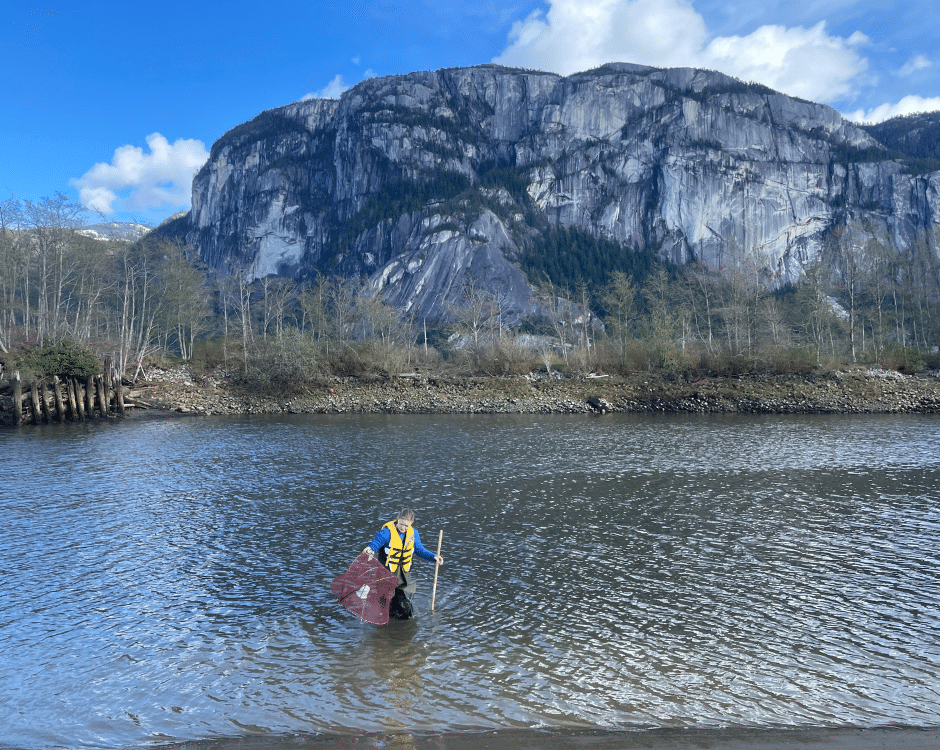By Lisa Houle | July 21, 2023
ISCBC is grateful to work with so many regional partners committed to preventing the spread of invasive plants and animals. In this line of work, it’s a team effort.
One of these partners is the Sea to Sky Invasive Species Council (SSISC). SSISC was founded in 2009 through a collaboration with local biologists, representatives from municipal, regional and provincial governments, Squamish Nation, horticulturalists, and other volunteers concerned about the impacts of invasive species in the Sea to Sky Region.
“We started small, with one part-time staff member, plus a volunteer group of directors and advisors,” said Clare Greenberg, SSISC’s Executive Director. “Over the past 14 years, SSISC has grown significantly. We work with a broad range of partners and funders – on enough projects, programs and at enough sites – to employ 16 staffers during peak field season.”
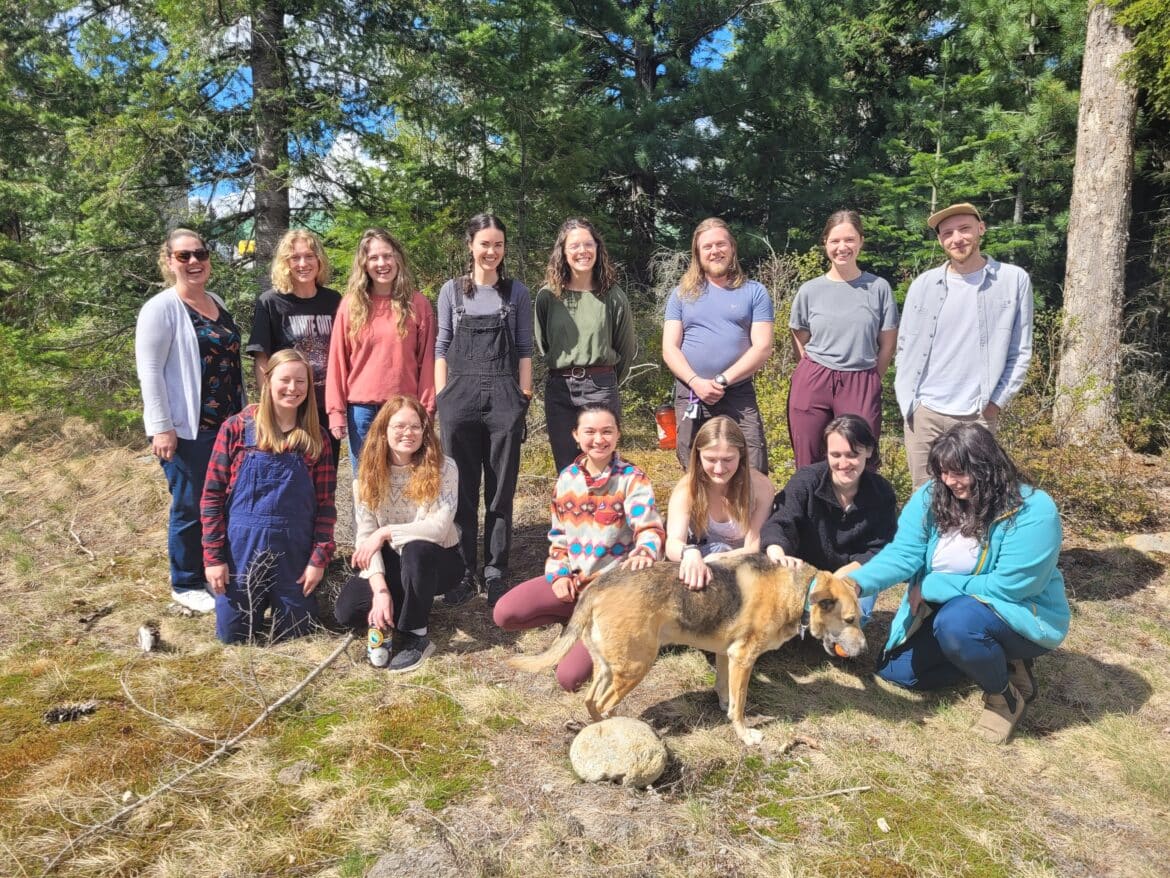
One of these staff members is Claude-Anne Godbout-Gauthier, SSISC’s current Education & Outreach Manager, who had an interesting segway into invasive species work.
“As a landscaper who participated in SSISC’s Invasive-Free Certification training workshop, I was surprised to learn that several plants from my schooling were harmful to the environment,” said Claude-Anne. Now employed by SSISC, she uses her knowledge to train landscapers and other groups on the best practices for preventing and managing invasive species, using this same training workshop – the first program of its kind in BC.
Some invasive species of concern in the Sea to Sky region include knotweeds (Reynoutria and Persicaria spp) and European green crab (Carcinus maenas). While most of the knotweed control is done in the southern half of the region, Clare notes there are only a handful of sites present north of Squamish – and they are working hard to keep it that way by responding quickly to reports. European green crab – established on the west coast of Vancouver Island, and most recently found in Boundary Bay (south of Vancouver) and on Salt Spring Island (near the entrance of Howe Sound) – poses a threat to the region. In response SSISC created a European green crab (EGC) monitoring program in Howe Sound, affectionately named the ‘Crab Team.’
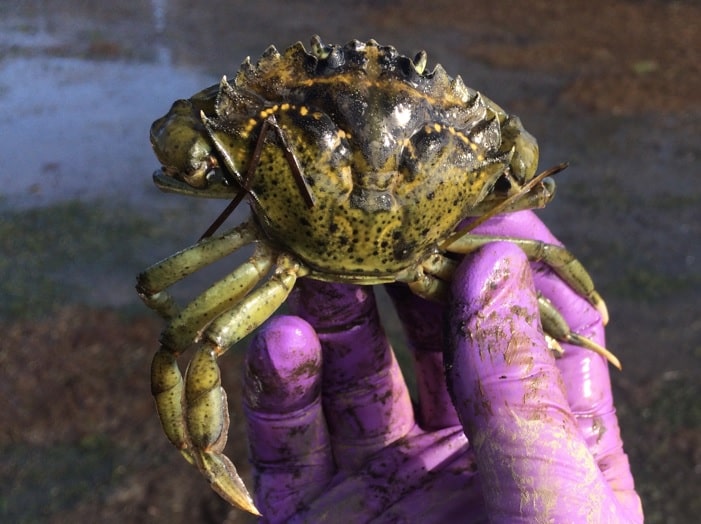
“This summer, the Crab Team is back for the 3rd year. This volunteer program is based on community science principles, and requires a high level of collaboration between partners, including Fisheries and Oceans Canada (DFO),” said Clare. “For 2023, we are monitoring for EGC at three sites in and around Squamish. We are happy to report that we have not found any European Green Crab in Howe Sound (so far)!”
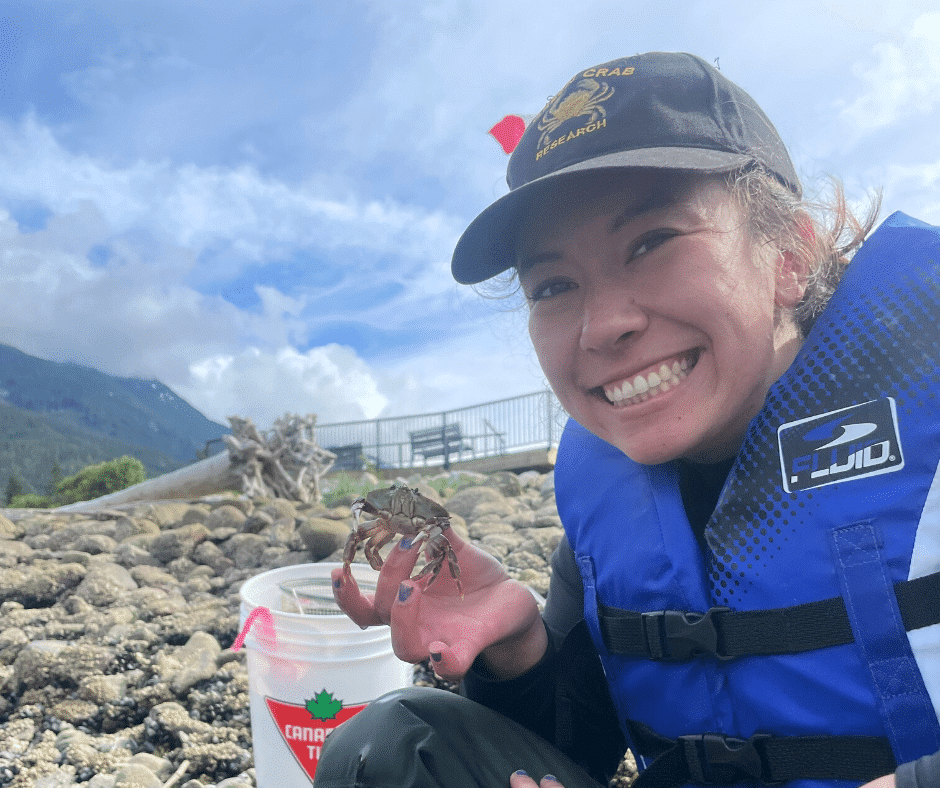
Looking back over the past 14 years, SSISC has a lot of success in response to their on-the-ground efforts and funder investment. Over the past year alone, their field team visited 367 previously treated sites that showed no signs of regrowth, a fact that is encouraging to Erin Galloway, SSISC’s Field Program Manager.
“We have seen a lot of encouraging results with our manual control of Yellow flag iris. For instance, in 2013 our team surveyed a patch of 200 square metres of Yellow flag iris (Iris pseudacorus) at the Cattermole Slough in Squamish. In 2022, only three square metres were left,” she said, attributing this reduction to the crew’s continuous efforts.
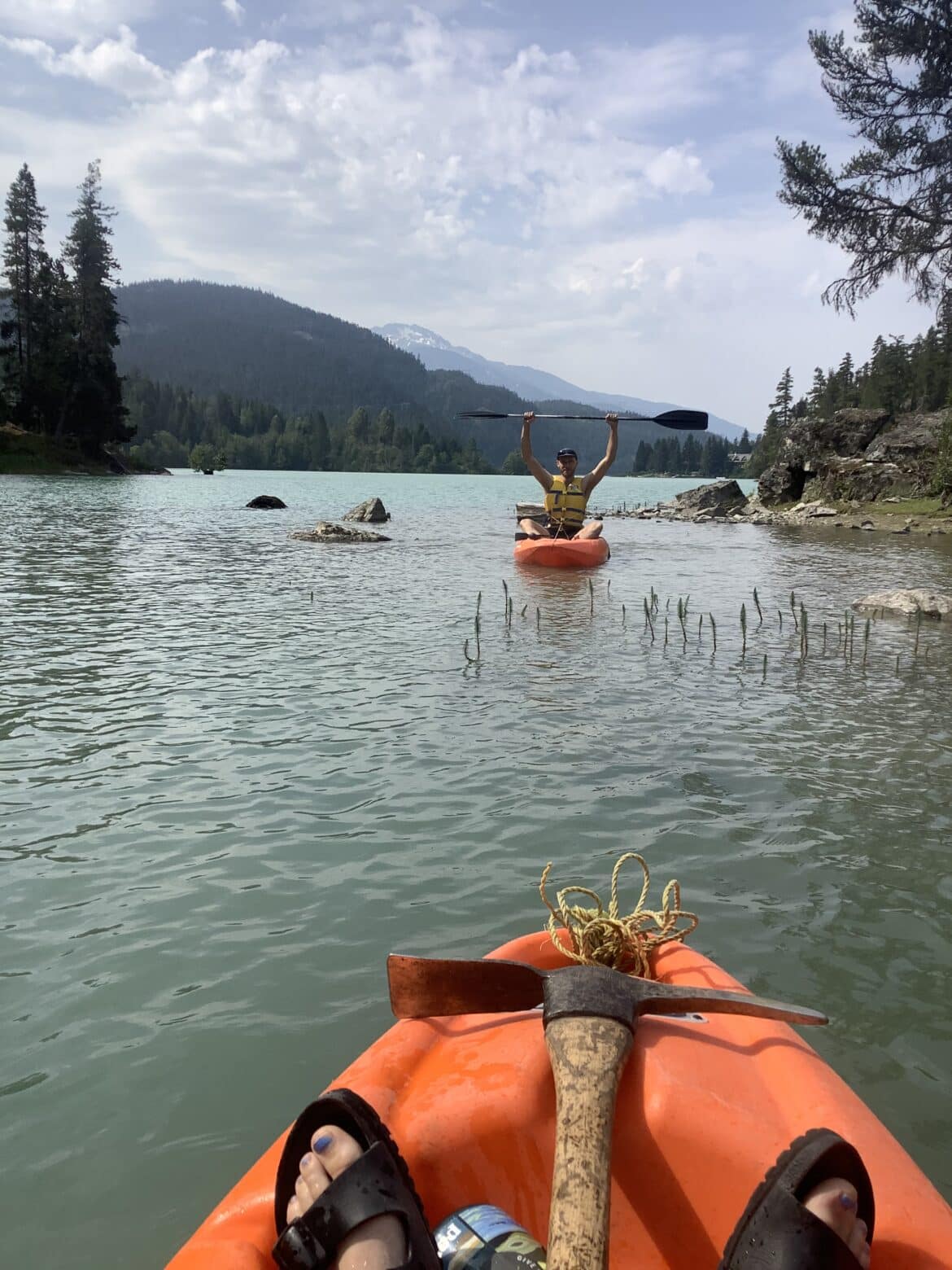
Clare believes SSISC’s success is ultimately due to the partnerships with land managers and funders they have built, maintained and expanded on.
“Landscape-scale invasive species management requires everyone’s involvement, and our efforts to bring partners to the local and regional planning table has enabled us to see some great results in the field. Invasive plant infestations often cross multiple jurisdictions, requiring funding and permissions to achieve effective control. I think one of our greatest strengths is our ability to communicate, collaborate and secure permissions and funding from many different landowners and managers across the region,” she said. “We are only one small player in the environmental conservation game in the Sea to Sky, but we have become a trusted ally and respected organization in the region, working collaboratively and effectively with others to protect biodiversity.”

But even with great support in place there are always challenges.
“I think the biggest challenge is that we are continually playing a game of ‘whack a mole’ – with new invasive species that arrive in the region, or ones already here that spread to new locations and become more established. On-the-ground invasive species control is a huge part of what we do, and it is incredibly frustrating when there are still invasive plants available for sale at the local plant store, or invasive animals being sold through the pet trade,” said Clare.
Fortunately big strides have been made in some local municipalities to address such an issue, such as the District of Squamish adopting the Invasive Species Management Bylaw in 2020 which, among other things, prohibits the sale of invasive species in the district – a first for BC.
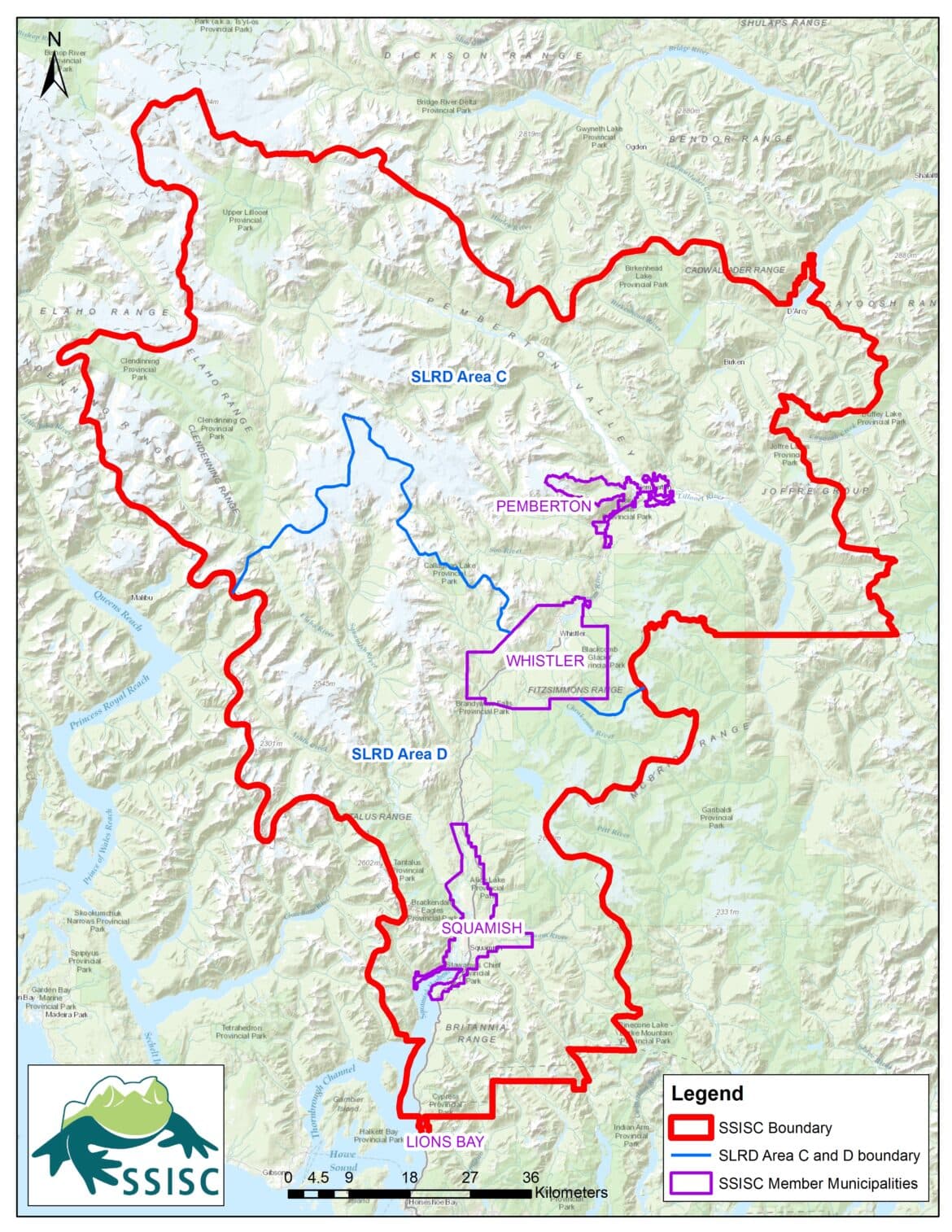
The Sea to Sky region is renowned for its natural beauty, outdoor recreation and adventure. And SSISC knows just how special it is.
“Our team is fond of the region’s climate, ecosystem, and geomorphologic diversity. We have access to snowy peaks, green meadows, dry slopes and rushing rivers that lead to the ocean. The plant and animal communities are just as diverse, and we want to keep it that way,” said Clare, noting as the number of visitors to the region increases, more pathways are created for invasive species to arrive and thrive. But the SSISC team is dedicated to preserving and protecting the natural values and biodiversity of their much beloved region.
“Awareness about invasive species and their impacts, and investment from land managers and funders to address the issues, has increased over the past 10 years. This illustrates there are a lot of Sea to Sky’ers that really care. And this gives us hope!”
Lisa is a Communications and Outreach Coordinator at ISCBC. She values a diverse environment and connecting with others about environmental protection. In her spare time Lisa enjoys spending time at the ocean and beach combing for sea glass. You can reach Lisa at lhoule@bcinvasives.ca
Share


